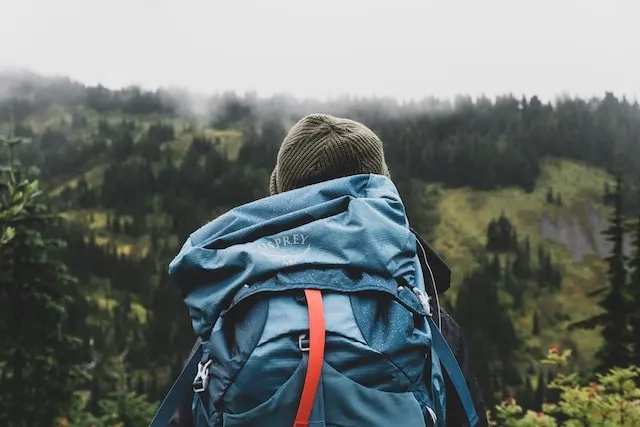Embarking on a solo backpacking adventure is both exhilarating and liberating. As you step into the realm of solo exploration, the importance of having the right gear cannot be overstated. In this extensive guide, we’ll delve deep into the Essential Solo Backpacking Gear for Beginners. Whether you’re a novice backpacker or a seasoned trekker, these insights, recommendations, and tips are tailored to enhance your solo journey.
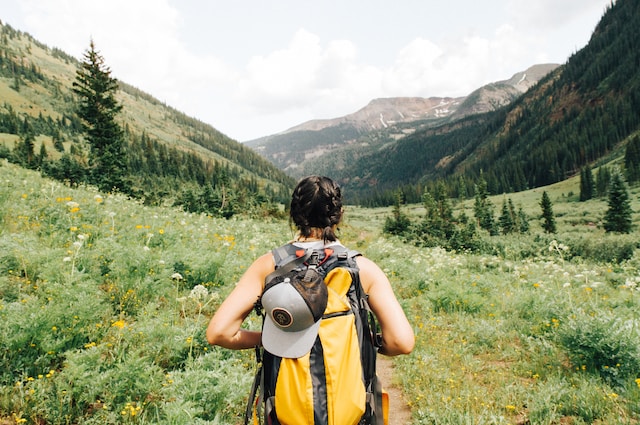
Discover the must-have Essential Solo Backpacking Gear for Beginners in this comprehensive guide. Unleash the thrill of solo adventures with expert insights, valuable recommendations, and practical tips. Gear up for an unforgettable journey.
Essential Solo Backpacking Gear for Beginners
Backpack
Your backpack is the cornerstone of your solo backpacking gear. It serves as your portable home, carrying all essentials for your journey. Choose a backpack that is not only comfortable but also appropriately sized for your trip’s duration.
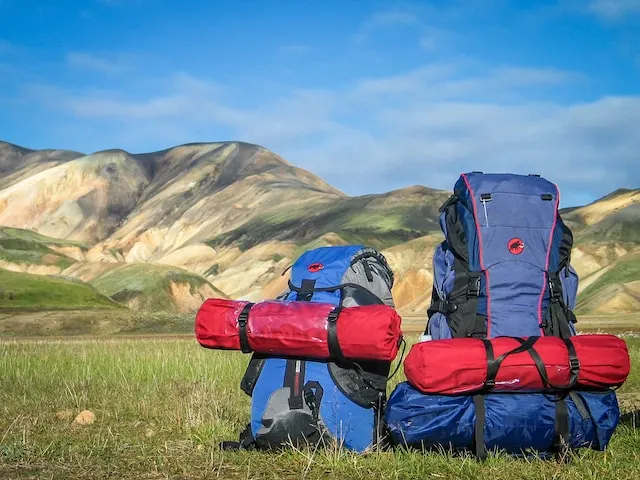
Look for features such as padded shoulder straps, a hip belt for effective weight distribution, and multiple compartments for organized packing. Whether you opt for a traditional top-loading pack or a more modern design, ensure it suits your adventure style.
Tent
Invest in a tent that becomes your reliable shelter during solo backpacking trips. A lightweight, durable tent is essential for protection against the elements. Consider features like easy setup, good ventilation, and resistance to various weather conditions. The right tent provides a comfortable and safe space for you to rest, rejuvenate, and enjoy the solitude of the outdoors.
Sleeping Bag
Your sleeping bag is your nighttime companion, providing warmth and comfort under the stars. Choose a bag with the right temperature rating for your destination. Consider the insulation type, weight, and compressibility for easy packing. A good sleeping bag ensures restful nights, vital for the energy you need during your days of exploration.
Hiking Boots
Sturdy, well-fitted hiking boots are your trusty companions on the trail. They provide the necessary support and protection for your feet on varied terrains. Ankle support is crucial to prevent injuries, especially during uneven terrain. Before your trip, break in your boots to ensure they conform to your feet, reducing the risk of discomfort and blisters.
Moisture-Wicking Clothing
Pack versatile clothing made from moisture-wicking materials. These fabrics pull sweat away from your body, keeping you dry and comfortable. Consider a layered approach, allowing you to adapt to changing weather conditions easily. From base layers to outer shells, choose clothing that suits the climate of your solo adventure.
Waterproof Jacket
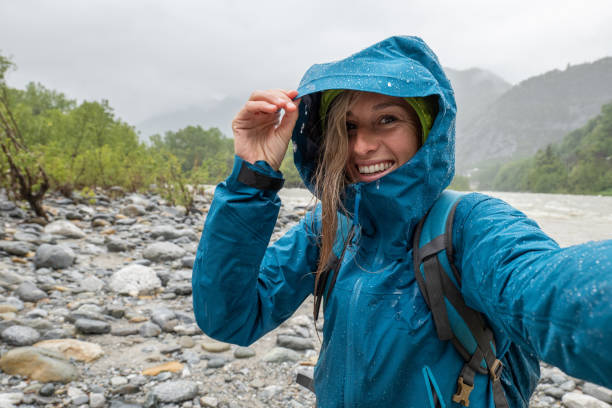
Stay dry and comfortable during unexpected rain showers with a reliable waterproof jacket. Look for a jacket that is not only waterproof but also breathable to prevent overheating. Its lightweight design allows you to easily pack it when not in use, ensuring you’re prepared for changing weather conditions.
Navigation Tools
Carry essential navigation tools to confidently explore unfamiliar trails. Whether it’s a map, compass, or GPS device, familiarity with these tools enhances your solo backpacking experience. Before your journey, acquaint yourself with basic navigation techniques to ensure you stay on the right path.
Water Bottle or Hydration System:
Hydration is paramount during your backpacking adventure. Carry a durable water bottle or a hydration system to keep yourself well-hydrated. Research water sources along your route and plan your hydration strategy accordingly. Staying hydrated is crucial for maintaining energy levels and overall well-being.
Lightweight Cooking Equipment
Opt for compact cooking gear to prepare meals on the trail. From lightweight stoves to portable cookware and utensils, choose items that are not only efficient but also easy to carry. A warm meal at the end of a day’s trek adds to the overall enjoyment of your solo backpacking experience.
First Aid Kit
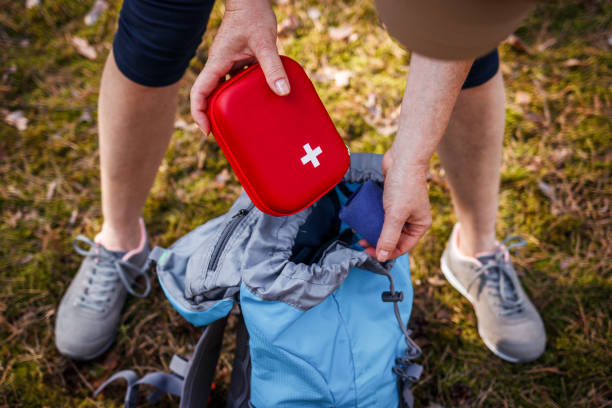
A comprehensive first aid kit is your safety net in the great outdoors. Include bandages, antiseptic wipes, pain relievers, and any personal medications you may need. Regularly check and replenish your first aid kit to ensure it’s well-stocked for unexpected situations.
Emergency Shelter
Pack an emergency shelter, such as a lightweight tarp or bivy, for additional protection in unforeseen circumstances. This serves as a backup in case your main shelter is compromised or unexpected weather conditions arise. An emergency shelter adds an extra layer of preparedness to your backpacking gear.
Multi-Tool
A versatile multi-tool is a compact powerhouse for various situations. Look for one that includes features like knives, pliers, screwdrivers, and scissors to handle a range of tasks. Its utility goes beyond gear maintenance, making it an essential tool for unexpected challenges in the wilderness.
Whistle
Include a whistle in your gear for signaling in emergencies. It’s a simple yet effective tool for attracting attention and alerting others to your presence. A whistle’s sharp sound carries well in outdoor environments, serving as a valuable communication tool in challenging situations.
Flashlight
Ensure you have a reliable light source for nighttime activities. Choose a lightweight and durable flashlight with long battery life. Alternatively, consider a headlamp for hands-free illumination while setting up camp or navigating trails in the dark.
Fire-Starting Tools
Carry tools like waterproof matches or a lighter for starting a fire. Fire serves multiple purposes, from cooking meals to providing warmth during chilly nights. Additionally, having the means to start a fire is crucial for signaling in emergency situations.
Compact Towel
A quick-dry, compact towel is a practical addition to your backpacking gear for personal hygiene. Look for lightweight and highly absorbent options that dry quickly. Its compact size ensures it takes up minimal space in your backpack.
Sun Protection
Protect yourself from the sun’s rays with sunscreen, sunglasses, and a hat. Choose a broad-spectrum sunscreen with a high SPF to shield your skin from harmful UV rays. UV-blocking sunglasses and a hat provide additional protection, especially during extended periods of sun exposure.
Insect Repellent
Guard against insects with a reliable repellent. Choose one that is effective against the specific insects in your destination, considering factors like mosquitoes and ticks. Applying insect repellent helps prevent uncomfortable bites and reduces the risk of insect-borne diseases.
Portable Power Bank
Keep your devices charged with a portable power bank. Ensure it has enough capacity to meet your needs, especially if you rely on electronic devices for navigation or communication. Consider a solar-powered option for extended trips where recharging opportunities may be limited.
Sleeping Pad
Enhance your sleeping comfort with a lightweight sleeping pad. Choose options that provide insulation from the ground, preventing heat loss during colder nights. The compact size ensures it easily fits into your backpack, adding a layer of comfort to your sleeping arrangement.
Duct Tape
Duct tape is a versatile and handy tool for quick gear repairs. From patching up tears in your tent to fixing a broken strap on your backpack, duct tape’s adhesive strength and durability make it an invaluable resource. Wrap a small amount around a lightweight object like a pen to save space in your pack.
Compact Binoculars:
Enjoy wildlife observation with compact binoculars. Choose lightweight, durable options with good optics for a clear view. Binoculars enhance your outdoor experience, allowing you to appreciate the details of nature and wildlife from a distance.
Nutrient-Rich Snacks

Pack lightweight, energy-boosting snacks for quick replenishment. Include a mix of nuts, dried fruits, energy bars, and other non-perishable options. Snacks provide a convenient source of energy during breaks, helping you stay fueled and focused on your journey.
Backpacking Stove
Consider a lightweight stove for cooking hot meals on the trail. Look for options that are compact, efficient, and suitable for the type of fuel available in your destination. A portable stove adds a level of convenience, allowing you to enjoy warm meals even in the wilderness.Repair Kits
Repair Kits
Carry small repair kits for gear and equipment. These kits should include basic tools, replacement parts, and materials for on-the-go fixes. Regular gear maintenance ensures that your equipment remains functional throughout your journey, preventing unexpected breakdowns.
What if you encounter with a wild animal?
Encountering a wild animal while on a solo backpacking trip can be a captivating experience, but it’s crucial to prioritize safety and follow best practices for wildlife encounters. Here’s a guide on what to do if you come across a wild animal:
Stay Calm:
Maintain a calm and composed demeanor. Avoid sudden movements or loud noises that might startle the animal. If you remain calm, you’re less likely to pose a threat, and the animal may continue its natural behavior.
Assess the Situation:
Assess the animal’s behavior from a safe distance. If it appears unaware of your presence or is calmly foraging, you can observe from afar without disturbing it. However, if the animal shows signs of agitation, such as pacing, growling, or raising its hackles, take extra precautions.
Give Space:
Slowly back away while keeping the animal in your line of sight. Give the animal plenty of space, and avoid getting between a wild animal and its young, if applicable. Maintain a safe distance to reduce the risk of provoking a defensive response.
Avoid Direct Eye Contact
In the animal kingdom, direct eye contact can be perceived as a threat or challenge. While observing, avoid staring directly into the eyes of the animal. Use your peripheral vision to keep an eye on its movements.
Make Yourself Known
If the animal hasn’t noticed you, make your presence known by speaking calmly in a low tone. This alerts the animal to your presence and reduces the likelihood of surprising it, which could lead to defensive behavior.
Raise Your Arms:
In some cases, raising your arms to appear larger can deter animals from approaching. This action signals to the animal that you are not an easy target.
Back Away Slowly
If the animal begins to approach, continue to back away slowly without turning your back. Avoid running, as it may trigger a chase response. Maintain a steady pace to create distance.
Use Bear Spray (if applicable)
If you are in an area with bears, carrying bear spray and knowing how to use it can be a valuable precaution. Keep it readily accessible and follow the instructions on the product.
Do Not Feed the Animal:
Under no circumstances should you feed wild animals. Feeding can alter their natural behavior, create dependence, and increase the risk of human-wildlife conflicts.
Report the Encounter:
After safely distancing yourself from the animal, report the encounter to local authorities or park rangers. Sharing information helps in monitoring wildlife behavior and ensuring the safety of both humans and animals.
Conclusion (Essential Solo Backpacking Gear for Beginners)
Armed with the right Essential Solo Backpacking Gear for Beginners, you’re poised for a transformative solo adventure. Embrace the freedom of solo backpacking, immerse yourself in nature, and create memories that will last a lifetime.
Remember, every encounter is unique, and different species may require varying responses. Educate yourself on the wildlife in the area you’re exploring, and follow any specific guidelines provided by local authorities. Being prepared and knowing how to react responsibly enhances both your safety and the well-being of the wild animals you encounter.
FAQs (Frequently Asked Questions)
Can I use regular sneakers for solo backpacking?
While regular sneakers might be comfortable, they lack the necessary ankle support for challenging terrains. Invest in proper hiking boots for a safer and more enjoyable experience.
What’s the ideal backpack size for beginners?
Aim for a backpack in the 40-50 liter range. This provides ample space for your essentials without being overly bulky for beginners.
How do I choose the right sleeping bag?
Consider the temperature rating, insulation type, and weight when selecting a sleeping bag. These factors ensure you stay warm and comfortable during nights outdoors.
Do I need a permit for solo backpacking in Europe?
Check the regulations of the specific areas you plan to visit. Some regions may require permits for solo backpacking, so it’s essential to be informed.
Are there solo backpacking groups for beginners?
Yes, consider joining online communities or local groups to connect with fellow solo backpackers. It’s a great way to share experiences, gather tips, and find companions for your journeys.
How can I prevent blisters during long hikes?
Ensure your hiking boots fit well, use moisture-wicking socks, and stop to address any discomfort promptly. Proper footwear and regular breaks contribute to blister prevention.


